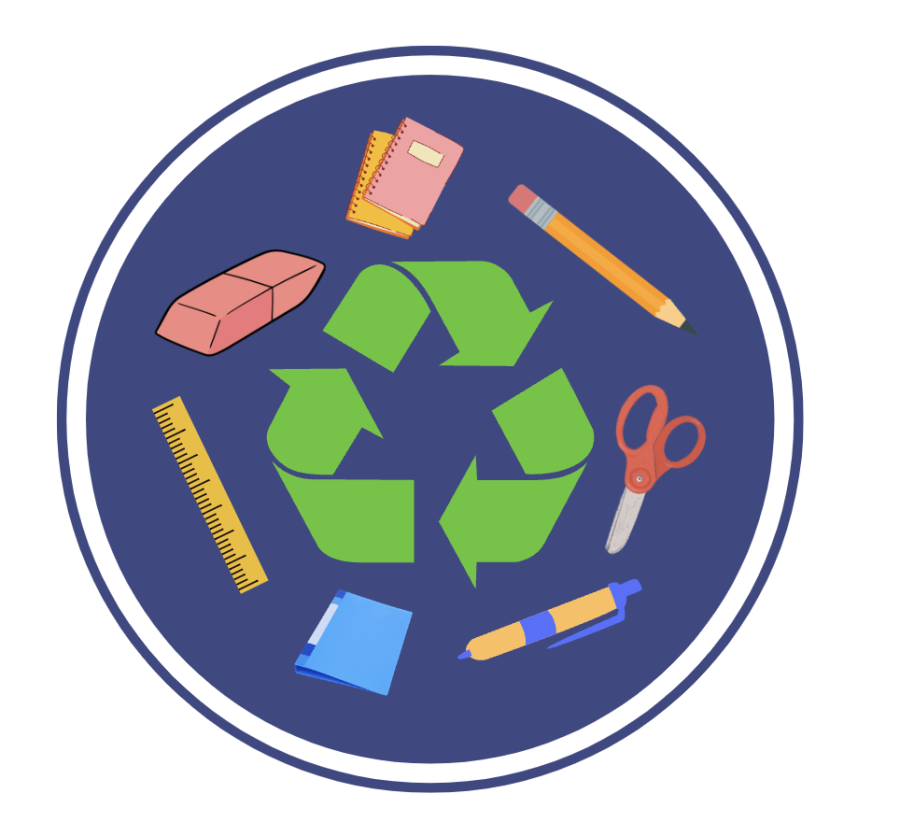The Importance of Reusing School Supplies
November 1, 2022
Before school starts in September, students of all ages look forward to going to the local Target or Staples and picking out all of their school supplies for the year. Shopping carts are piled high with unnecessary stacks of folders, pens, notebooks, pencils, and much more. Bright colors and eye-catching designs lure children into picking out materials that they will hardly use throughout the school year. Thus, at the end of each school year, families dump pounds of half-used supplies into landfills.. At some point, students and families have to ask themselves, is buying brand new school supplies each year actually necessary?
The environmental impact of buying new school supplies is detrimental as plastic pollution around the world continues to worsen. School supplies are typically made up of thick, dense, plastics which when thrown out, pollute landfills and do not decompose for hundreds of years. According to Earthday.org, two garbage trucks filled with plastic are dumped into landfills every minute. Throwing out lightly used pens or perfectly intact folders does nothing but add to the destruction of our ecosystem. According to Ciel.org, 99% of plastic is made from chemicals sourced from fossil fuels. Plastic school supplies are not only contributing to landfill pollution but create immense amounts of air pollution as well.
In addition to the negative effect excess school supplies have on the environment, the cost is another major concern. Families with students in grades K-12 plan to spend an average of $864 on school supplies in one year – a sum that generally has been on the rise. While some expenses cannot be avoided, like buying required graphing calculators or paper , households are not doing nearly enough to reuse school supplies. While certain families may see value in purchasing new materials, many can save hundreds of dollars by spending a small amount of time taking inventory and conserving what they can. The cost of school supplies further affects teachers who spend their own money on various supplies for their students. According to mylearningworld.com, teachers will spend $820.14 out of pocket on school supplies this year. By students reusing supplies and taking only what they need, pressure on teachers to buy school supplies can be relieved.
Towards the end of the year, school trash cans begin to overflow with plastic folders in great shape, unused writing utensils, and notebooks that are less than half-filled. While there is often an urge to get rid of anything related to school when summer starts, it is crucial that students avoid this habit. Parents should make reutilizing school supplies fun and engaging. School districts should encourage families to reuse school supplies and make the most of what they have. By taking just a few steps to recycle and reuse, a challenging financial and environmental issue can be reduced.




